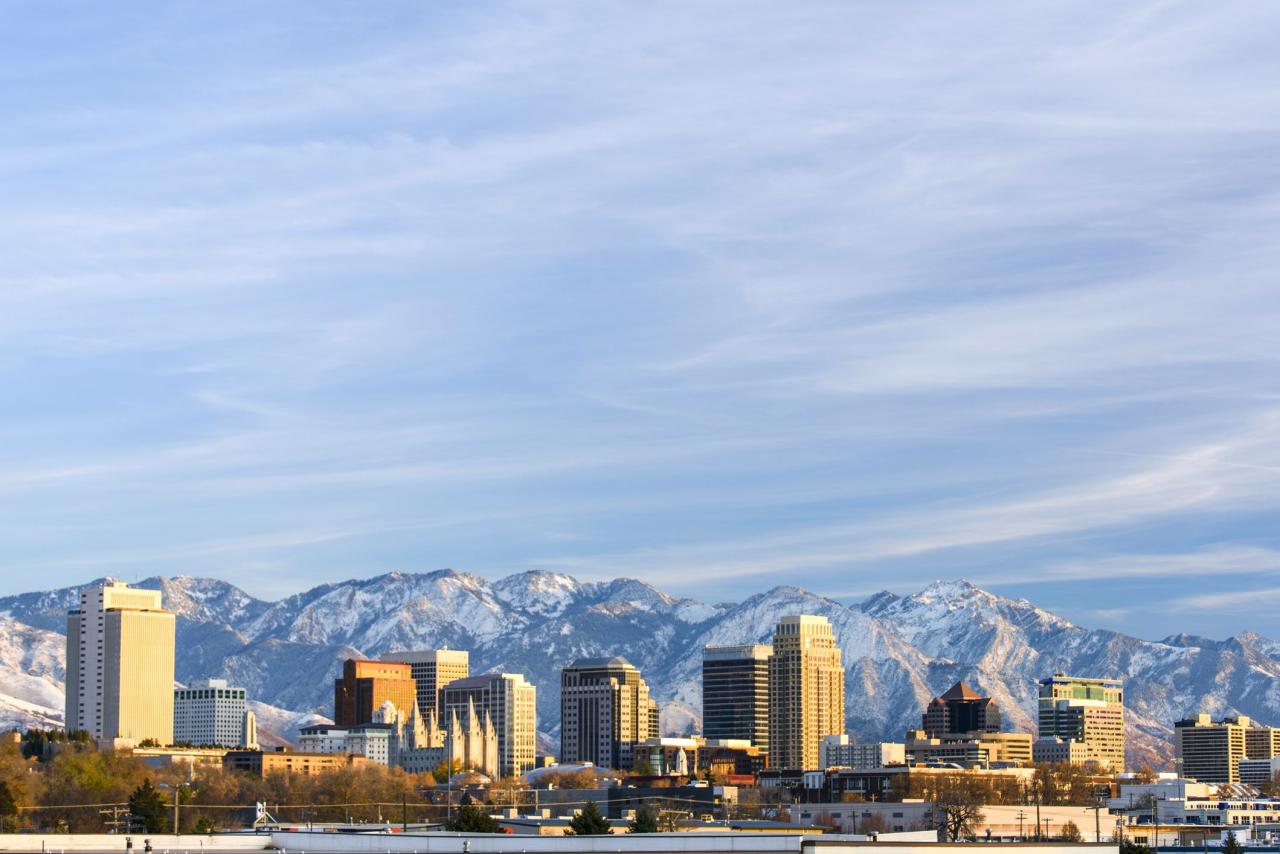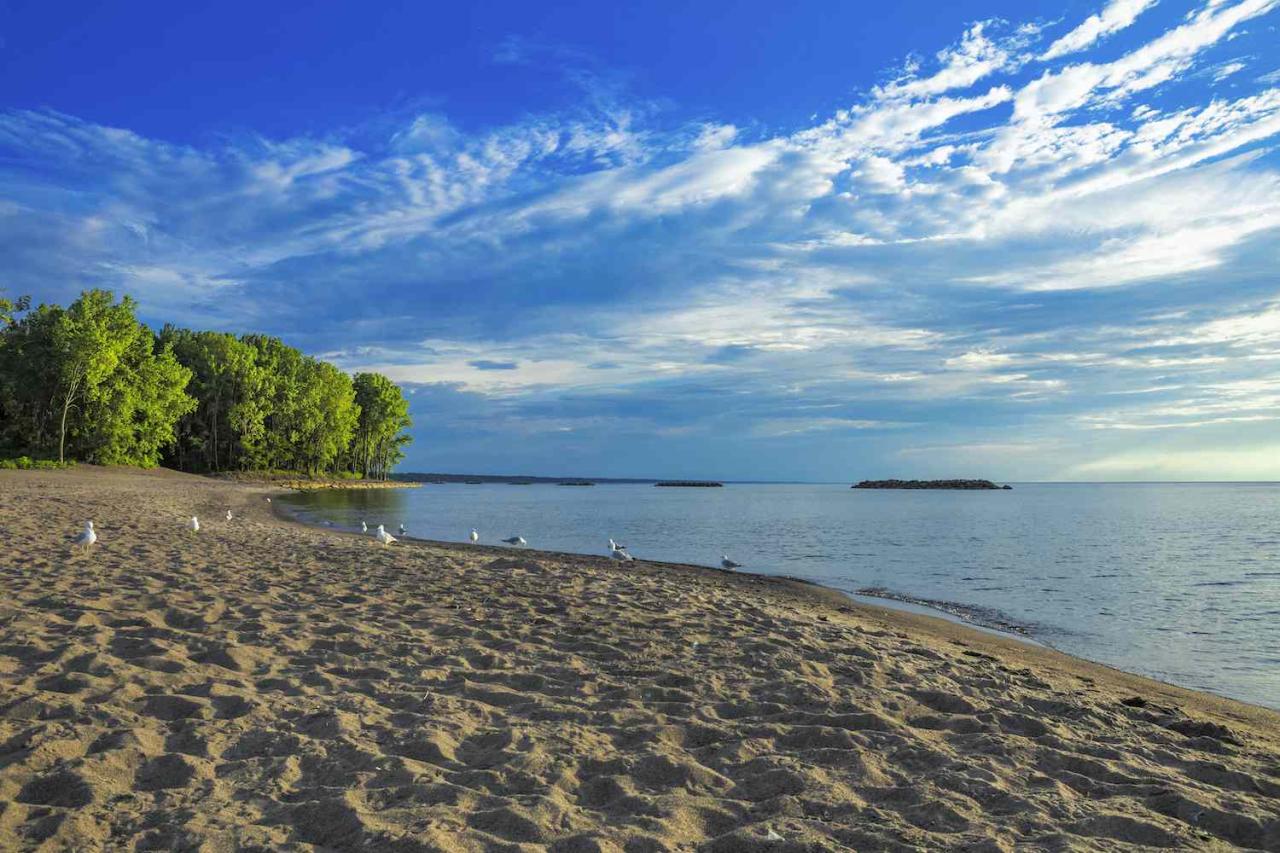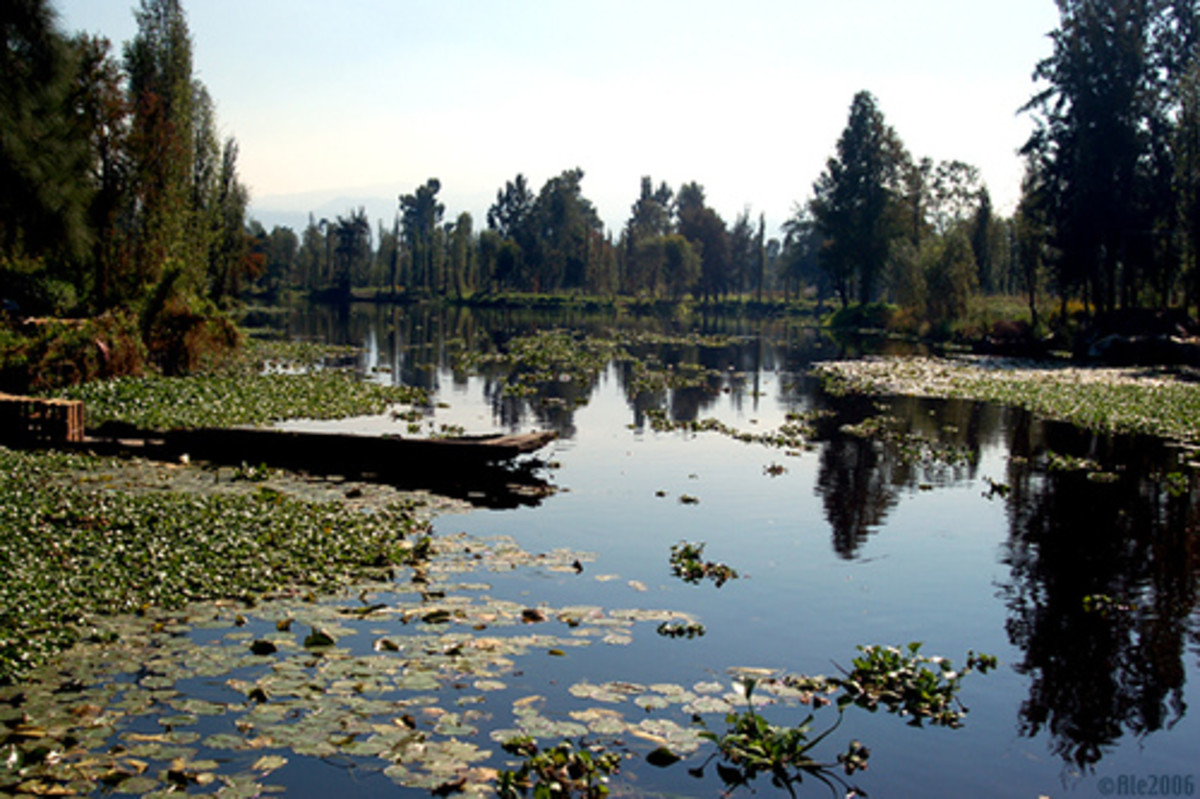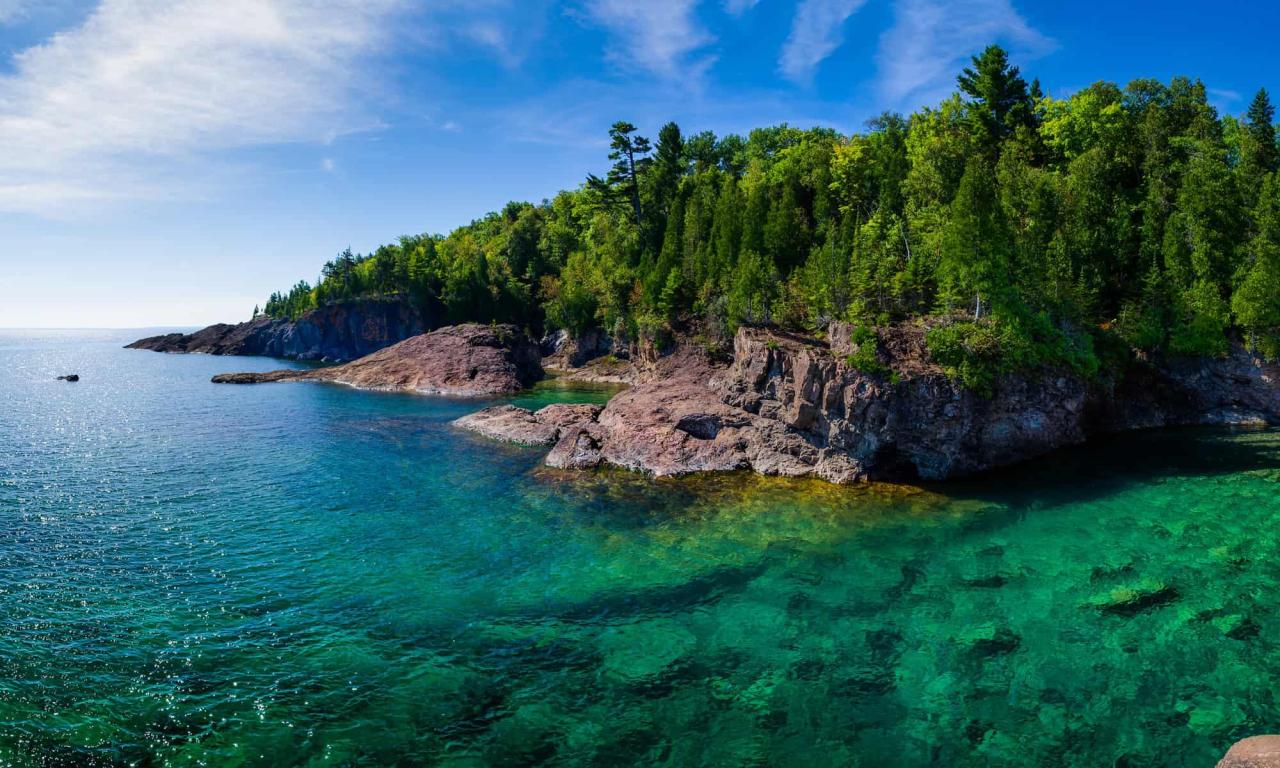Lake Huron, the second-largest of the Great Lakes, is a breathtaking expanse of water that stretches across the border of Canada and the United States. Its crystal-clear waters, pristine beaches, and diverse ecosystem attract visitors from around the world, eager to explore its natural beauty and rich history.
From the towering bluffs of Bruce Peninsula National Park in Canada to the picturesque shores of Mackinac Island in Michigan, Lake Huron offers a variety of landscapes and experiences. It is a haven for boaters, anglers, and nature enthusiasts alike, providing opportunities for everything from swimming and sunbathing to kayaking and birdwatching.
Lake Huron Geography
Lake Huron is the second-largest of the five Great Lakes in North America, boasting a vast expanse of freshwater and captivating scenery. This majestic lake, with its diverse shoreline, is a natural wonder that has played a significant role in the history and culture of the region.
Its geographic location, size, and geological formation contribute to its unique characteristics and ecological significance.
Location and Borders
Lake Huron is situated in the northeastern part of North America, nestled between the Canadian province of Ontario and the U.S. states of Michigan and Wisconsin. It shares borders with the other Great Lakes, including Lake Superior to the west, Lake Michigan to the south, and Lake Erie to the southeast.
The Straits of Mackinac, a narrow channel, connects Lake Huron to Lake Michigan. The St. Clair River, Lake St. Clair, and the Detroit River link Lake Huron to Lake Erie. The eastern shore of Lake Huron is marked by Georgian Bay, a large, intricate network of islands and waterways that adds to the lake’s beauty and complexity.
Size and Depth, Lake huron
Lake Huron is an impressive body of water, covering an area of approximately 23,000 square miles (59,600 square kilometers), making it the second-largest freshwater lake in the world. Its average depth is about 195 feet (59 meters), with a maximum depth reaching 750 feet (230 meters) in the main basin.
The lake’s vastness and depth contribute to its diverse ecosystem and its role as a major shipping route.
Geological Formation
Lake Huron’s formation is intricately linked to the geological history of the Great Lakes region. The lake was formed during the last glacial period, when massive ice sheets carved out the landscape, leaving behind vast depressions that filled with meltwater.
The retreating glaciers left behind a network of interconnected lakes, which eventually evolved into the Great Lakes system. Lake Huron, along with the other Great Lakes, is a testament to the powerful forces of nature that shaped the landscape over millennia.
Lake Huron Ecology
Lake Huron’s vast expanse and diverse shoreline support a rich and complex ecosystem, home to a wide array of plant and animal species. The lake’s unique characteristics, including its depth, water temperature, and nutrient levels, create a diverse habitat for a variety of life forms.
The lake’s ecological health is essential for the well-being of the surrounding region, supporting recreational activities, fisheries, and the overall balance of the Great Lakes ecosystem.
Plant and Animal Diversity
The waters of Lake Huron are home to a diverse array of aquatic plants, including algae, reeds, and submerged vegetation. These plants provide food and shelter for a variety of fish species, including walleye, muskellunge, trout, and bass. The lake also supports a rich population of invertebrates, such as crayfish, snails, and insects, which play a crucial role in the food web.
The lake’s shoreline is characterized by a variety of habitats, including wetlands, forests, and dunes, providing nesting grounds and foraging areas for a wide range of birds. The presence of these diverse species highlights the importance of Lake Huron as a critical habitat for biodiversity in the Great Lakes region.
Migratory Birds and Fish
Lake Huron plays a vital role in the migratory patterns of many bird species. The lake’s vast shoreline and abundant food sources provide crucial stopover points for birds traveling along the Great Lakes flyway. Species like the common loon, the bald eagle, and the piping plover rely on the lake’s resources for breeding, nesting, and foraging.
The lake’s depths also support a variety of migratory fish species, such as salmon and lake trout, which travel long distances to spawn in the lake’s tributaries. These migratory patterns highlight the interconnectedness of the Great Lakes ecosystem and the importance of preserving the lake’s natural resources.
Human Impact on the Ecosystem
Human activities have had a significant impact on Lake Huron’s ecosystem. Pollution from industrial sources, agricultural runoff, and urban development has resulted in the degradation of water quality and the decline of some fish populations. Invasive species, such as zebra mussels and quagga mussels, have disrupted the lake’s food web and altered the ecological balance.
Climate change is also posing a threat to Lake Huron’s ecosystem, with rising water temperatures and changing precipitation patterns affecting the lake’s water levels, ice cover, and overall health. Addressing these challenges requires a concerted effort to promote sustainable practices and protect the lake’s natural resources for future generations.
Lake Huron History
Lake Huron has been a focal point for human activity for centuries, its shores witnessing the rise and fall of civilizations, the development of trade routes, and the evolution of cultural landscapes. From the indigenous communities who thrived along its shores to the European explorers who charted its waters, Lake Huron has played a pivotal role in shaping the history of the Great Lakes region.
Indigenous Communities
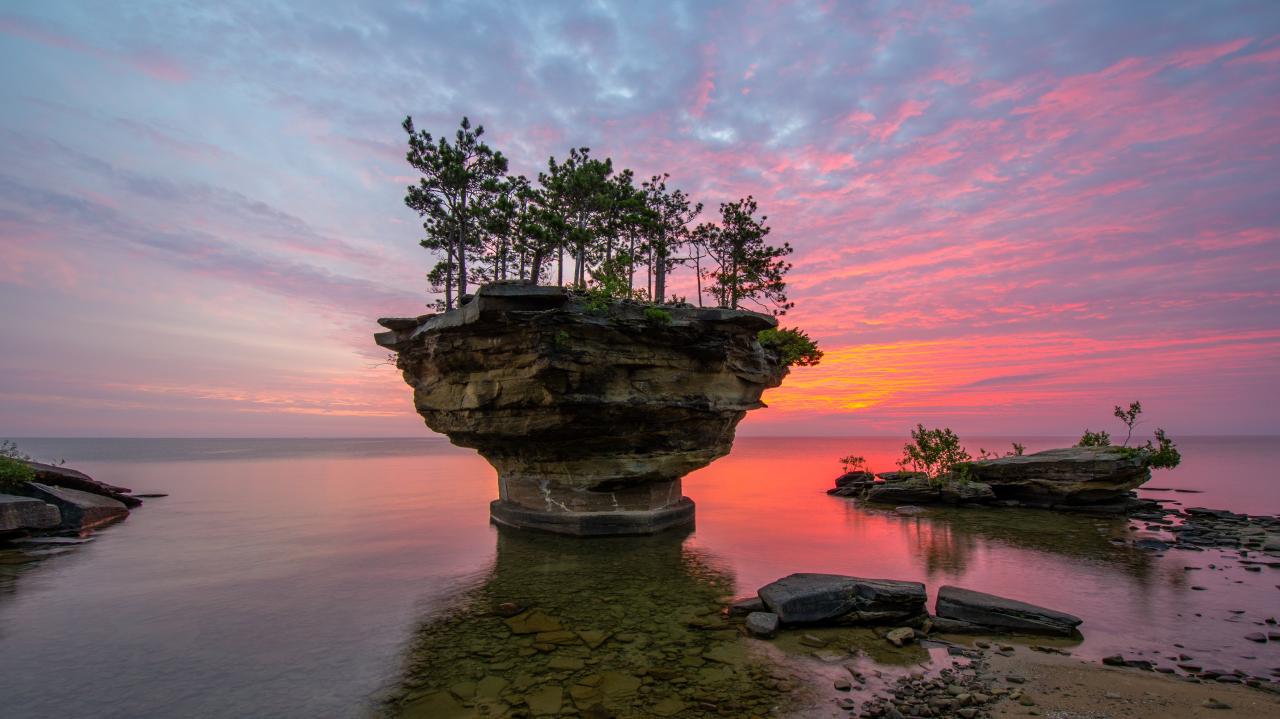
For millennia, indigenous communities have lived along the shores of Lake Huron, relying on its resources for sustenance, transportation, and cultural practices. The Anishinaabe, Ojibwe, and Odawa peoples, among others, have deep historical connections to the lake, their traditions and stories intertwined with its natural beauty.
These communities developed sophisticated systems of resource management and governance, living in harmony with the lake’s ecosystem. The rich cultural heritage of these indigenous communities continues to influence the region’s identity and underscores the importance of preserving their traditions and perspectives.
Fur Trade and Exploration
The arrival of European explorers in the 17th century marked a turning point in Lake Huron’s history. The lake became a major hub for the fur trade, as European traders sought valuable pelts from the region’s abundant wildlife. French explorers, such as Samuel de Champlain and Étienne Brûlé, were among the first Europeans to navigate the lake, establishing trading posts and charting its waters.
The fur trade led to the development of settlements along the lake’s shores, contributing to the region’s economic growth and cultural exchange.
Shipping and Maritime Industries
The development of shipping and maritime industries in the 19th century further transformed Lake Huron’s role in the region’s economy. The lake became a vital transportation route for goods and resources, connecting cities and industries across the Great Lakes. The construction of canals and locks, such as the Welland Canal, facilitated the movement of larger vessels, making Lake Huron a crucial link in the Great Lakes shipping network.
The growth of shipping industries spurred the development of port cities, such as Sault Ste. Marie and Bay City, which became centers of commerce and trade. The lake’s maritime heritage continues to shape the region’s economy and identity, with its shores still bustling with shipping activity.
Lake Huron Recreation
Lake Huron’s pristine waters, scenic shorelines, and diverse ecosystems offer a wealth of recreational opportunities for visitors and residents alike. Whether you’re seeking adventure on the water, relaxation on the beach, or exploration of the region’s natural beauty, Lake Huron has something to offer everyone.
Popular Recreational Activities
Lake Huron is a haven for water sports enthusiasts, with opportunities for boating, fishing, swimming, and kayaking. The lake’s vast expanse provides ample space for sailing, powerboating, and waterskiing. Fishing enthusiasts can cast their lines for a variety of species, including walleye, muskellunge, trout, and bass.
The lake’s clear waters and sandy beaches make it a popular destination for swimming and sunbathing. The calm waters of Georgian Bay provide ideal conditions for kayaking and canoeing, allowing visitors to explore the region’s islands and waterways.
Notable Landmarks and Scenic Spots
The shores of Lake Huron are dotted with notable landmarks and scenic spots that offer breathtaking views and historical significance. The Mackinac Bridge, a suspension bridge spanning the Straits of Mackinac, is a landmark that connects the Upper and Lower Peninsulas of Michigan and offers panoramic views of the lake.
The Bruce Peninsula National Park, located on the eastern shore of Lake Huron, features dramatic cliffs, pristine beaches, and a diverse ecosystem. The Sleeping Bear Dunes National Lakeshore, on the western shore of Lake Huron, is known for its towering sand dunes, clear waters, and scenic hiking trails.
Tourist Destinations and Attractions
- Mackinac Island: This car-free island, located in the Straits of Mackinac, is a popular tourist destination known for its Victorian architecture, horse-drawn carriages, and fudge shops.
- Sault Ste. Marie: Located at the eastern end of Lake Superior, Sault Ste. Marie is a historic city known for its role in the fur trade and its impressive Soo Locks, which allow ships to navigate between Lake Superior and Lake Huron.
- Alpena: This coastal city on the eastern shore of Lake Huron is known for its sandy beaches, lighthouses, and maritime history.
- Thunder Bay: Located on the northern shore of Lake Huron, Thunder Bay is a city known for its natural beauty, its role in the lumber industry, and its proximity to the Sleeping Bear Dunes National Lakeshore.
- Georgian Bay Islands National Park: This park, located on the eastern shore of Lake Huron, features a network of islands, forests, and waterways, offering opportunities for hiking, camping, and kayaking.
Lake Huron Environmental Concerns
Despite its natural beauty and recreational value, Lake Huron faces a number of environmental challenges that threaten its health and sustainability. Pollution, invasive species, and climate change are among the major threats to the lake’s ecosystem, requiring concerted efforts to protect and preserve its natural resources.
Water Pollution
Water pollution is a significant threat to Lake Huron’s health, with sources ranging from industrial discharges and agricultural runoff to urban wastewater and atmospheric deposition. Industrial facilities, particularly those involved in manufacturing, mining, and energy production, can release pollutants into the lake, impacting water quality and aquatic life.
Agricultural runoff, containing fertilizers, pesticides, and animal waste, can also contribute to nutrient loading and algal blooms, disrupting the lake’s ecosystem. Urban wastewater discharges can introduce pathogens and other contaminants into the lake, posing health risks to humans and wildlife.
Atmospheric deposition, the transfer of pollutants from the air to the lake’s surface, can also contribute to water pollution.
Invasive Species
The introduction of invasive species has had a profound impact on Lake Huron’s ecosystem. Zebra mussels and quagga mussels, originally from the Caspian Sea, have spread throughout the Great Lakes, outcompeting native species for food and habitat. These mussels have also caused significant damage to infrastructure, such as water intake pipes, and have altered the lake’s food web.
Other invasive species, such as round gobies and sea lampreys, have also disrupted the lake’s ecological balance, requiring ongoing efforts to control their populations.
Climate Change
Climate change is posing a significant threat to Lake Huron’s ecosystem, with rising water temperatures, changing precipitation patterns, and increased frequency of extreme weather events impacting the lake’s water levels, ice cover, and overall health. Warmer water temperatures can lead to increased algal blooms, oxygen depletion, and habitat loss for cold-water fish species.
Changes in precipitation patterns can affect the lake’s water levels, leading to periods of drought or flooding. Increased frequency of extreme weather events, such as storms and heavy rainfall, can exacerbate erosion, flooding, and water pollution.
Last Point
Lake Huron stands as a testament to the power and beauty of nature. Its vastness, diversity, and historical significance make it a treasure to be cherished and protected. Whether you’re seeking adventure, relaxation, or a deeper connection to the natural world, Lake Huron offers a unique and unforgettable experience.


